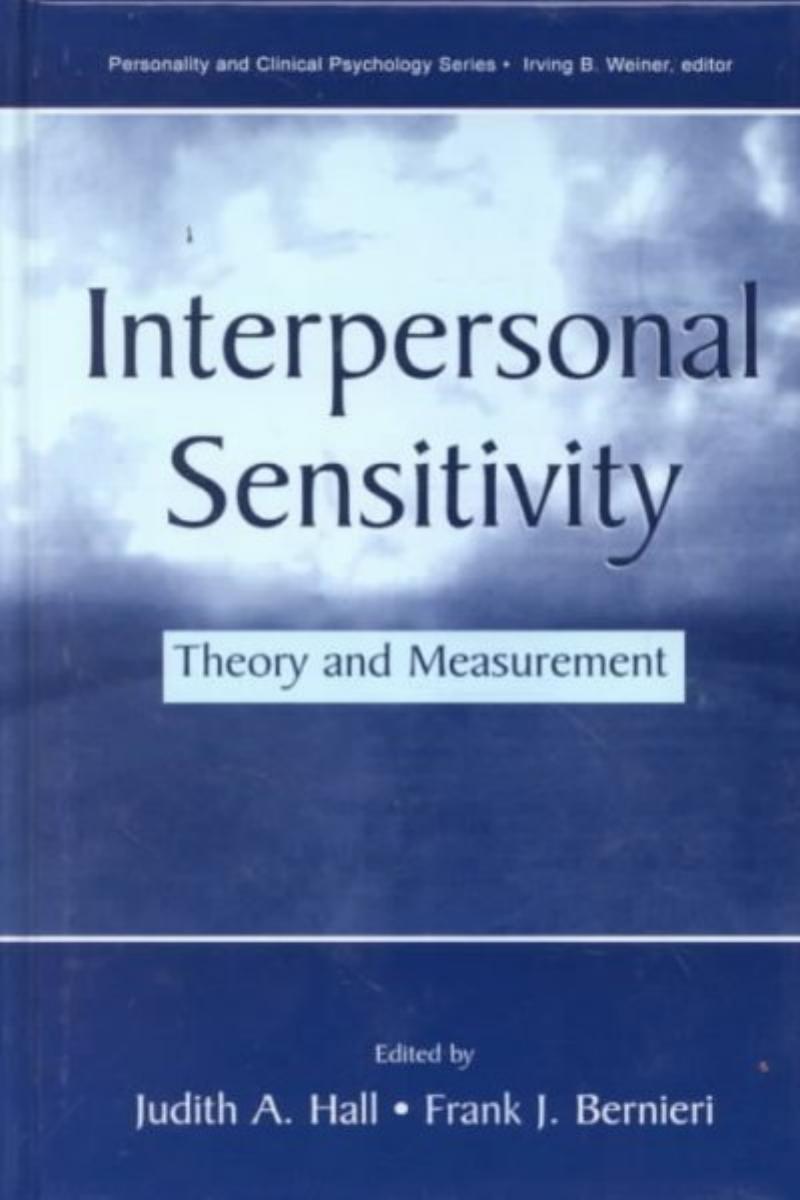Interpersonal Sensitivity by Hall Judith A. Bernieri Frank J

Author:Hall, Judith A.,Bernieri, Frank J.
Language: eng
Format: epub, pdf
Tags: Behavioral Sciences
Publisher: Taylor & Francis Ltd
Published: 2001-05-31T16:00:00+00:00
Ambady, Hallahan, and Rosenthal (1995) examined how unacquainted participants judged and were judged by others. They found that accurate judges scored higher on the IPT and that performance on the IPT predicted accuracy of judgment for women. Hall, Halberstadt, and O’Brien (1997) used the IPT as part of an investigation of the hypothesis that people who have been subordinated possess an enhanced ability to interpret nonverbal cues. Their findings did not support the subordination hypotheses. Patterson and Stockbridge (1998) used either full-channel or silent forms of the IPT to examine the effect of judgment strategy and cognitive load on the accuracy of social perception. They found that for the silent version of the IPT, people were more accurate under low cognitive demand conditions.
Although the IPT is very much a new arrival in the person-perception, nonverbal communication, and interpretation research communities, we are buoyed by what we see. The early investigations suggest that the IPT may be able to make important contributions across a highly diverse range of hypotheses, questions, and research applications. The intriguing results obtained so far encourage us to be optimistic about the general usefulness of the IPT and the shorter IPT-15.
In conclusion, we believe the unique design features of the IPT and the IPT-15 include (a) naturalistic interaction, (b) the simultaneous presence of both verbal and nonverbal channels, (c) multiple encoders, (d) questions that require interpretation and not mere cue recognition, (e) real-time exposure lengths, and (f) objectively correct answers. We very much hope that these features will make the IPT and the IPT-15 attractive to any researcher eager to approximate the conditions of real person perception, naturalistic nonverbal behavior, and authentic interpretation. In addition, we are extremely encouraged by research results—our own and others—that performance on the IPT strongly (and consistently) predicts important outcomes and also the qualities of real relationships outside the laboratory. As Hodgins and Zuckerman (1990) concluded from their research with the IPT:
Interactions between roommates who both correctly interpret nonverbal behaviors are more meaningful and characterized by more mutual disclosure and support. Apparently, emotional sharing requires that interactants tune in not only to the verbal content of messages but also to the accompanying cues from face, body, and tone of voice.
Download
Interpersonal Sensitivity by Hall Judith A. Bernieri Frank J.pdf
This site does not store any files on its server. We only index and link to content provided by other sites. Please contact the content providers to delete copyright contents if any and email us, we'll remove relevant links or contents immediately.
Rewire Your Anxious Brain by Catherine M. Pittman(18586)
Talking to Strangers by Malcolm Gladwell(13288)
The Art of Thinking Clearly by Rolf Dobelli(10315)
Mindhunter: Inside the FBI's Elite Serial Crime Unit by John E. Douglas & Mark Olshaker(9260)
Becoming Supernatural by Dr. Joe Dispenza(8165)
Change Your Questions, Change Your Life by Marilee Adams(7679)
Nudge - Improving Decisions about Health, Wealth, and Happiness by Thaler Sunstein(7655)
The Road Less Traveled by M. Scott Peck(7554)
The Lost Art of Listening by Michael P. Nichols(7452)
Mastermind: How to Think Like Sherlock Holmes by Maria Konnikova(7278)
Enlightenment Now: The Case for Reason, Science, Humanism, and Progress by Steven Pinker(7272)
Win Bigly by Scott Adams(7133)
The Way of Zen by Alan W. Watts(6548)
Daring Greatly by Brene Brown(6472)
Big Magic: Creative Living Beyond Fear by Elizabeth Gilbert(5675)
Grit by Angela Duckworth(5554)
Ego Is the Enemy by Ryan Holiday(5345)
Men In Love by Nancy Friday(5192)
The Laws of Human Nature by Robert Greene(5077)
